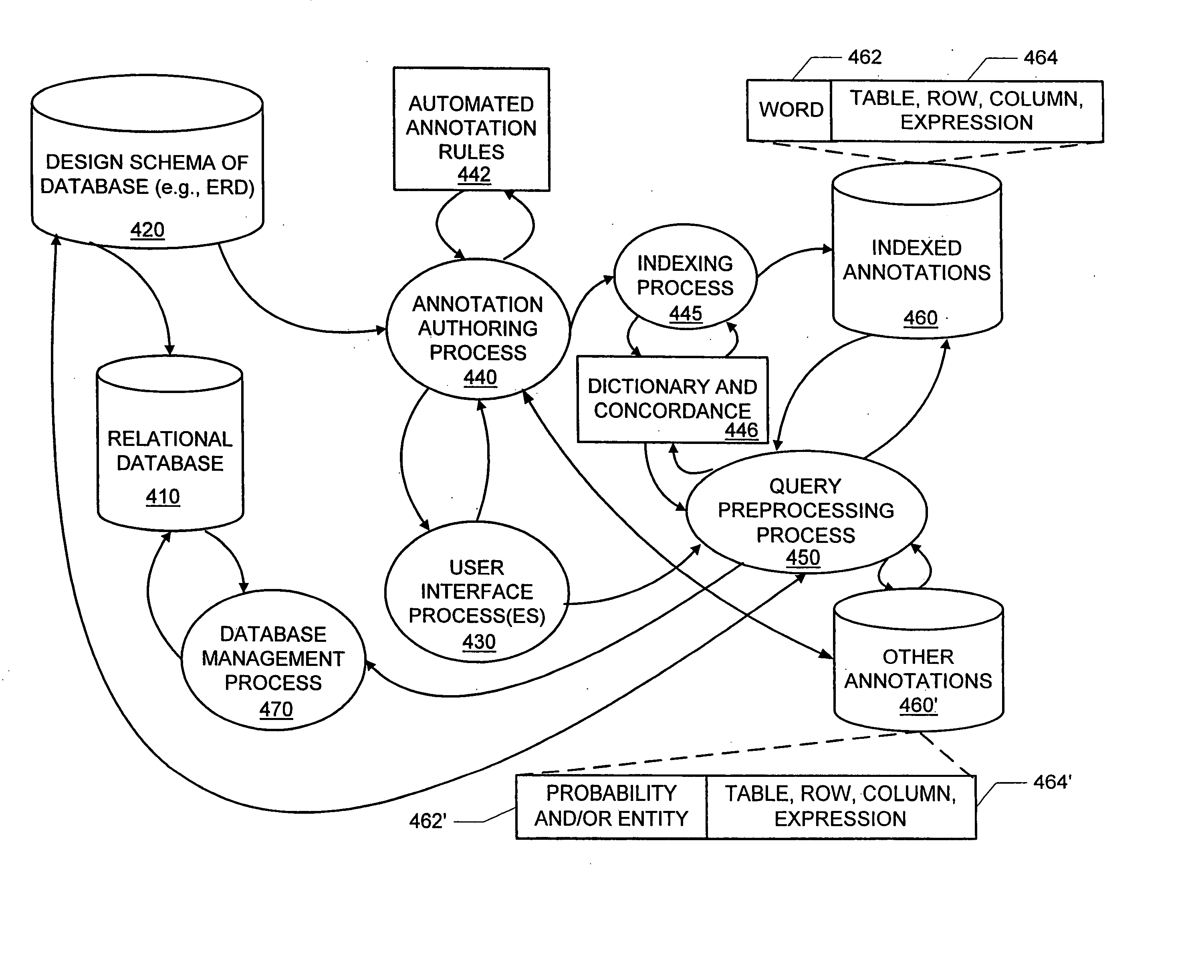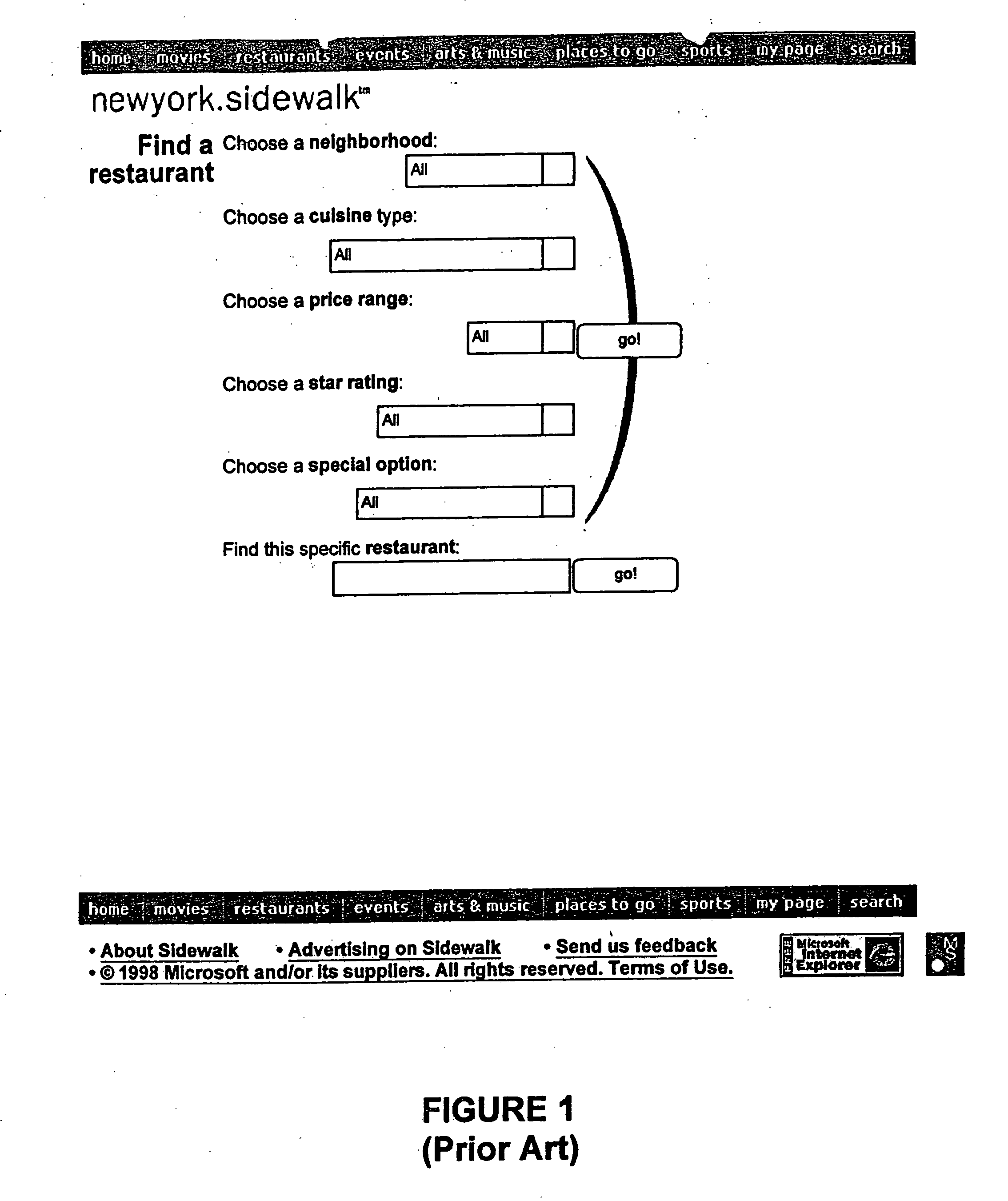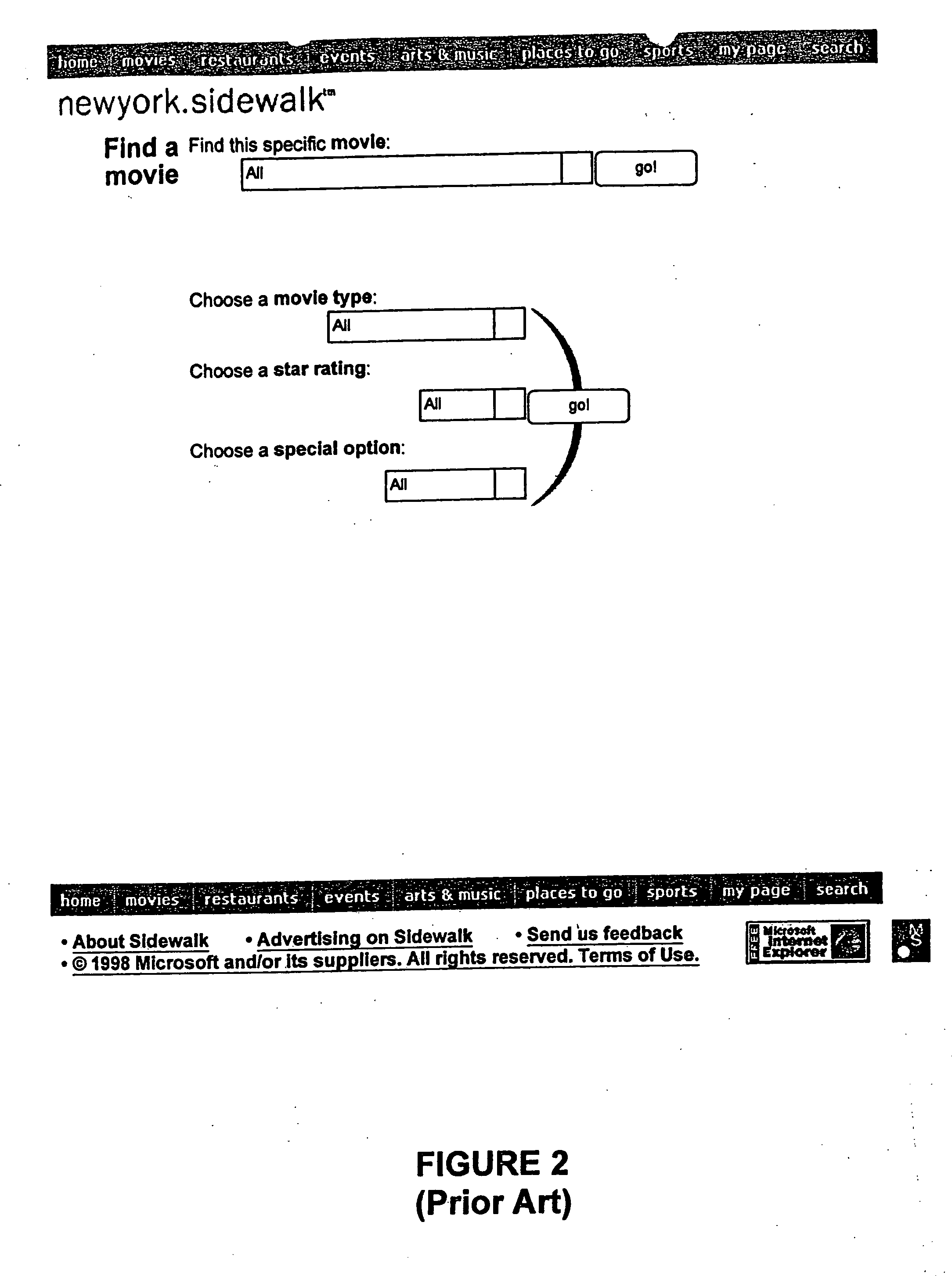Methods, apparatus and data structures for facilitating a natural language interface to stored information
a natural language interface and information technology, applied in the field of natural language interfaces, can solve the problems of search heuristics, unwanted data, and overwhelming the user's availability of data, and achieve the effects of facilitating the performance of at least, facilitating the annotation of semantic information, and facilitating the conversion of natural language queries
- Summary
- Abstract
- Description
- Claims
- Application Information
AI Technical Summary
Benefits of technology
Problems solved by technology
Method used
Image
Examples
Embodiment Construction
[0047] The present invention concerns novel methods, apparatus, and data structures for helping to provide a natural language interface to stored information, such as in a database for example. The following description is presented to enable one skilled in the art to make and use the invention, and is provided in the context of particular applications and their requirements. Various modifications to the disclosed embodiments will be apparent to those skilled in the art, and the general principles set forth below may be applied to other embodiments and applications. Thus, the present invention is not intended to be limited to the embodiments shown.
[0048] Below, high level functions which may be performed by, and structure of, a system of the present invention are presented in § 4.1 and § 4.2, respectively. Thereafter, authoring tool and query pre-processor aspects of the present invention are described in § 4.3 and § 4.4, respectively. More specifically, functions of the authoring ...
PUM
 Login to View More
Login to View More Abstract
Description
Claims
Application Information
 Login to View More
Login to View More - R&D
- Intellectual Property
- Life Sciences
- Materials
- Tech Scout
- Unparalleled Data Quality
- Higher Quality Content
- 60% Fewer Hallucinations
Browse by: Latest US Patents, China's latest patents, Technical Efficacy Thesaurus, Application Domain, Technology Topic, Popular Technical Reports.
© 2025 PatSnap. All rights reserved.Legal|Privacy policy|Modern Slavery Act Transparency Statement|Sitemap|About US| Contact US: help@patsnap.com



